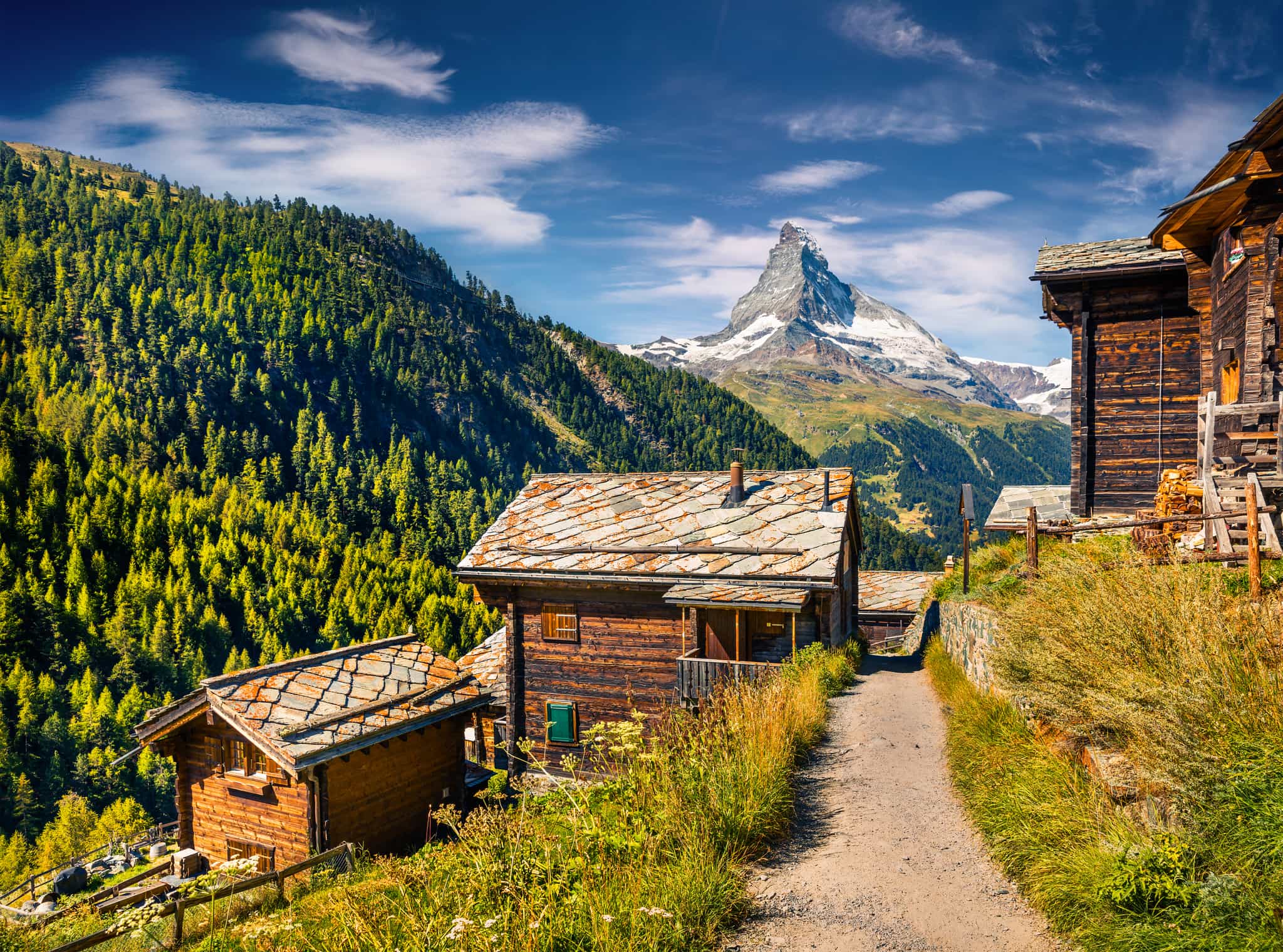
Trek the Haute Route from Chamonix to Zermatt
Follow a spectacular trail, hut-to-hut through the heart of the Alps
What's Included?
Activities & Certified Guides
All itinerary activities with experienced, English-speaking IML-certified guidesGuesthouse & Mountain hut
9 nights in guesthouses, B&Bs and mountain hutsMeals
Munch on tasty food throughoutEquipment
Pillows and blankets are provided at the refuges. Trekking poles are available for hire.Small Like-minded Groups
Solo-friendly by design, join our small n’ sociable groups of up to 10 like-minded, active and outdoorsy people…
What's it like?






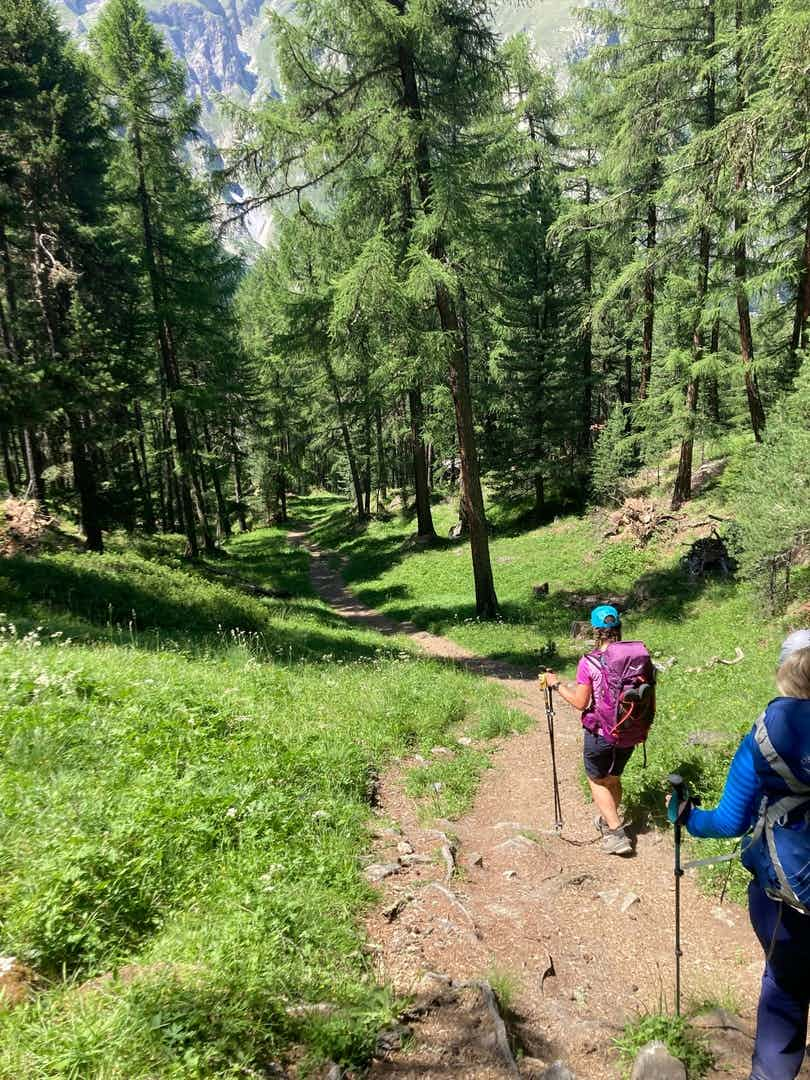
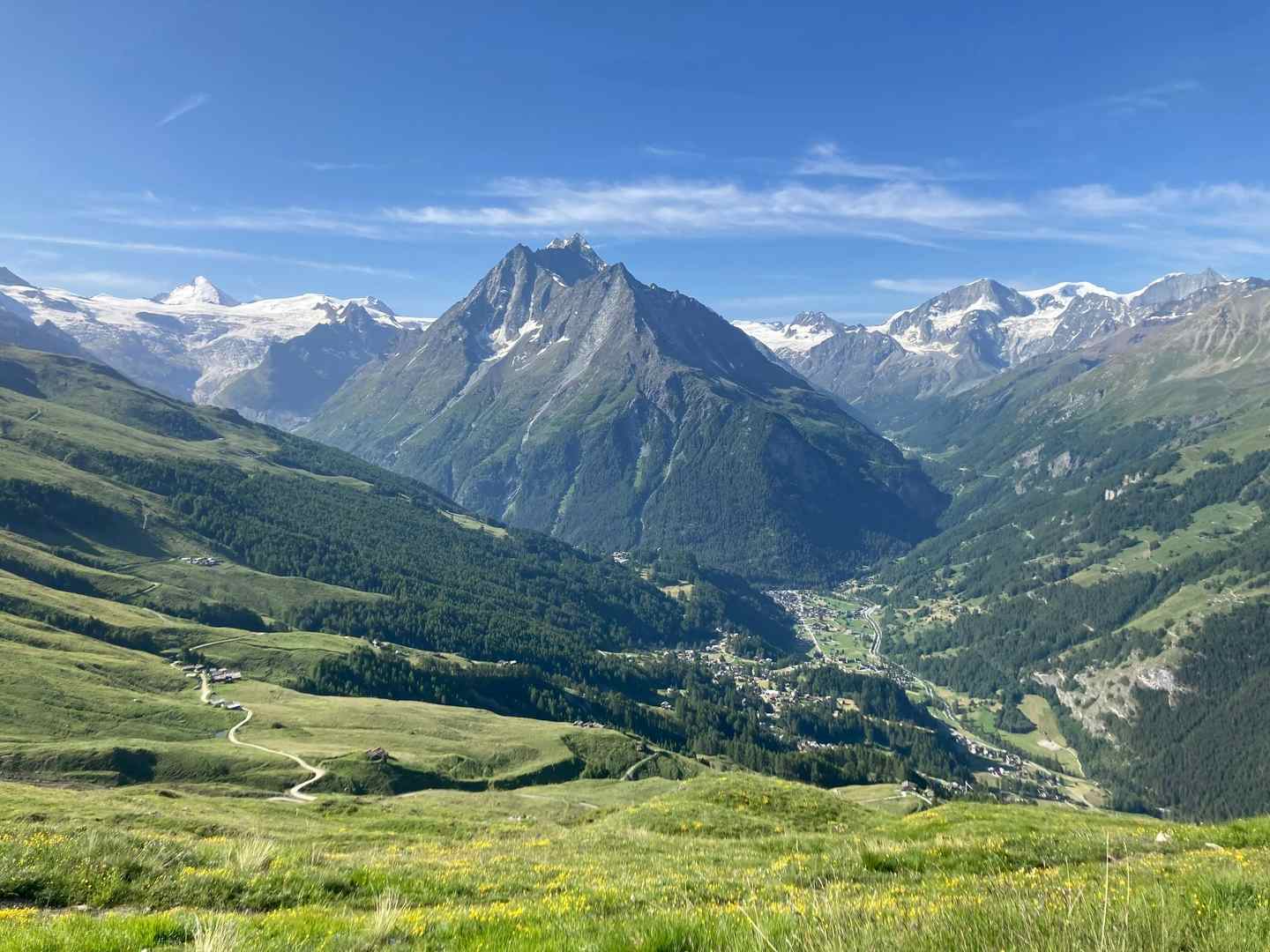
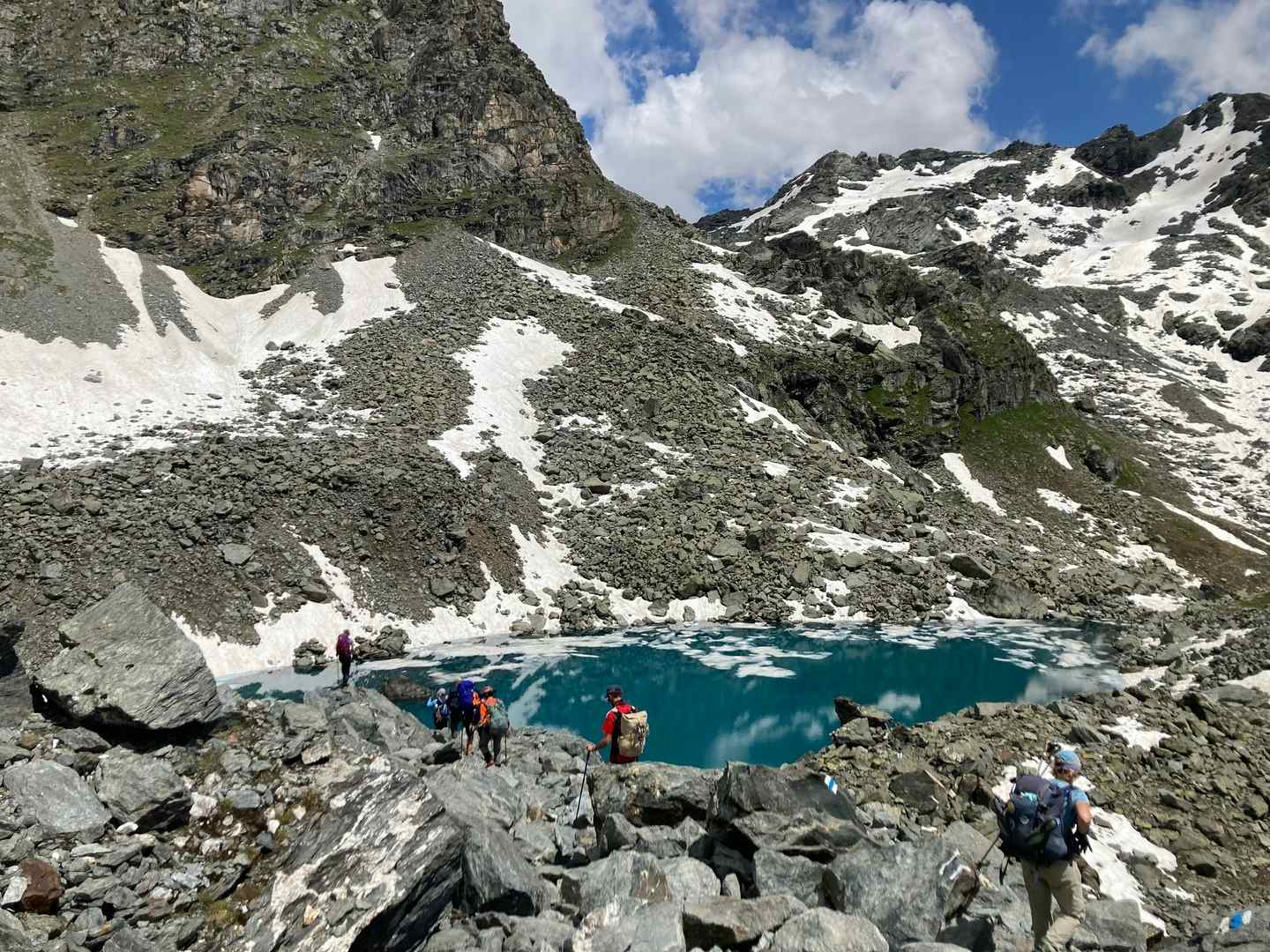
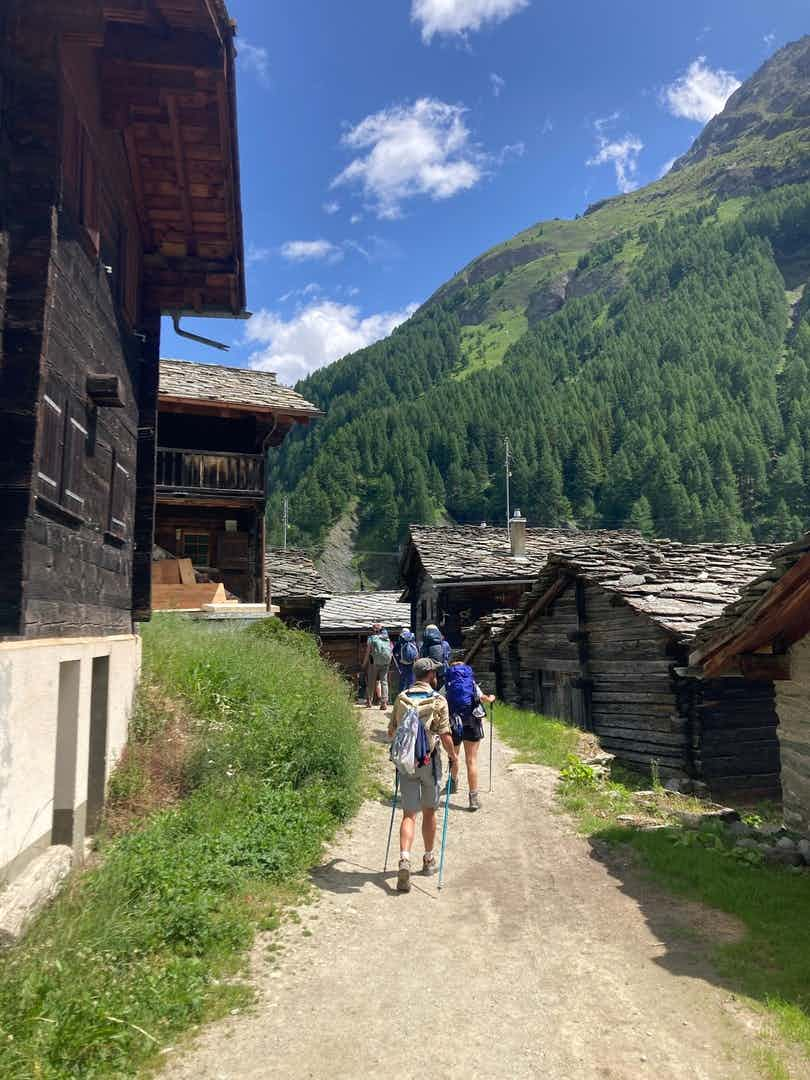
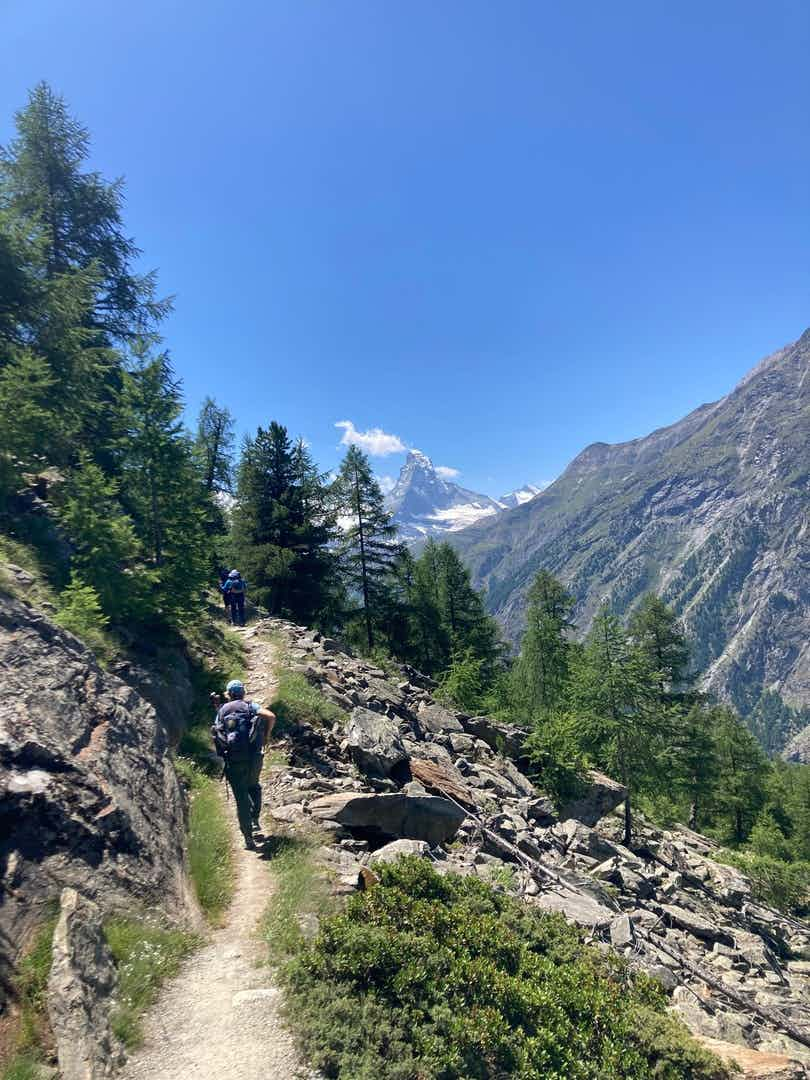
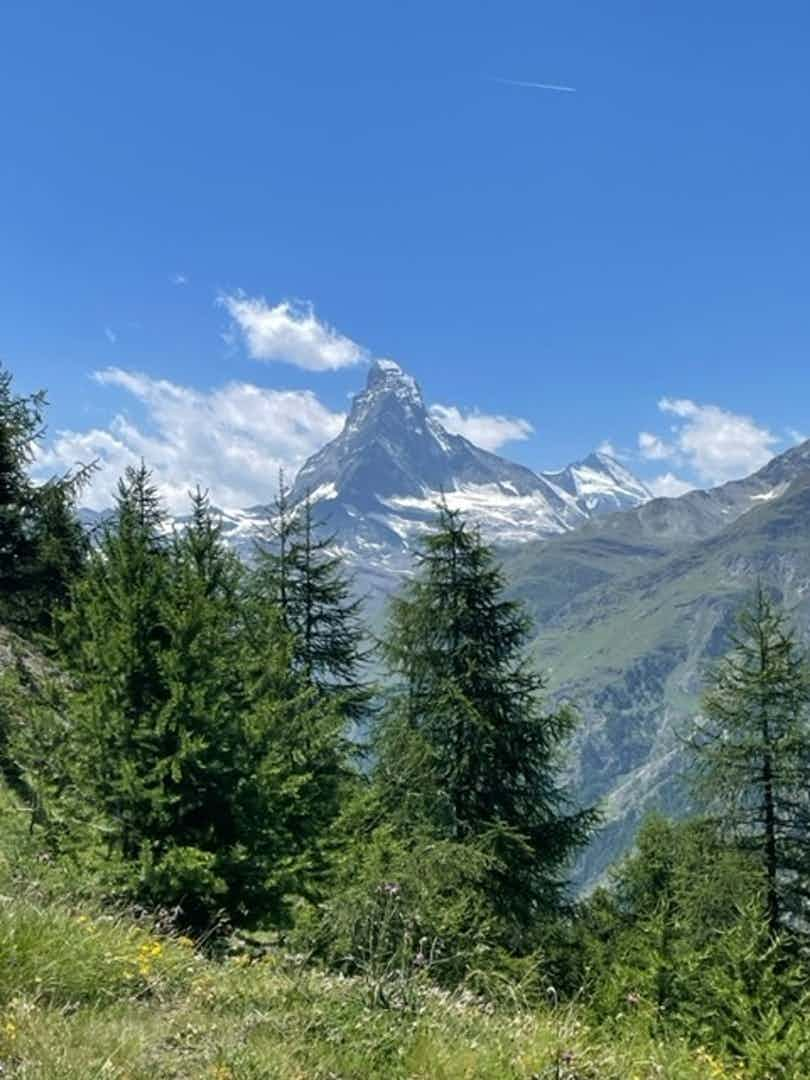
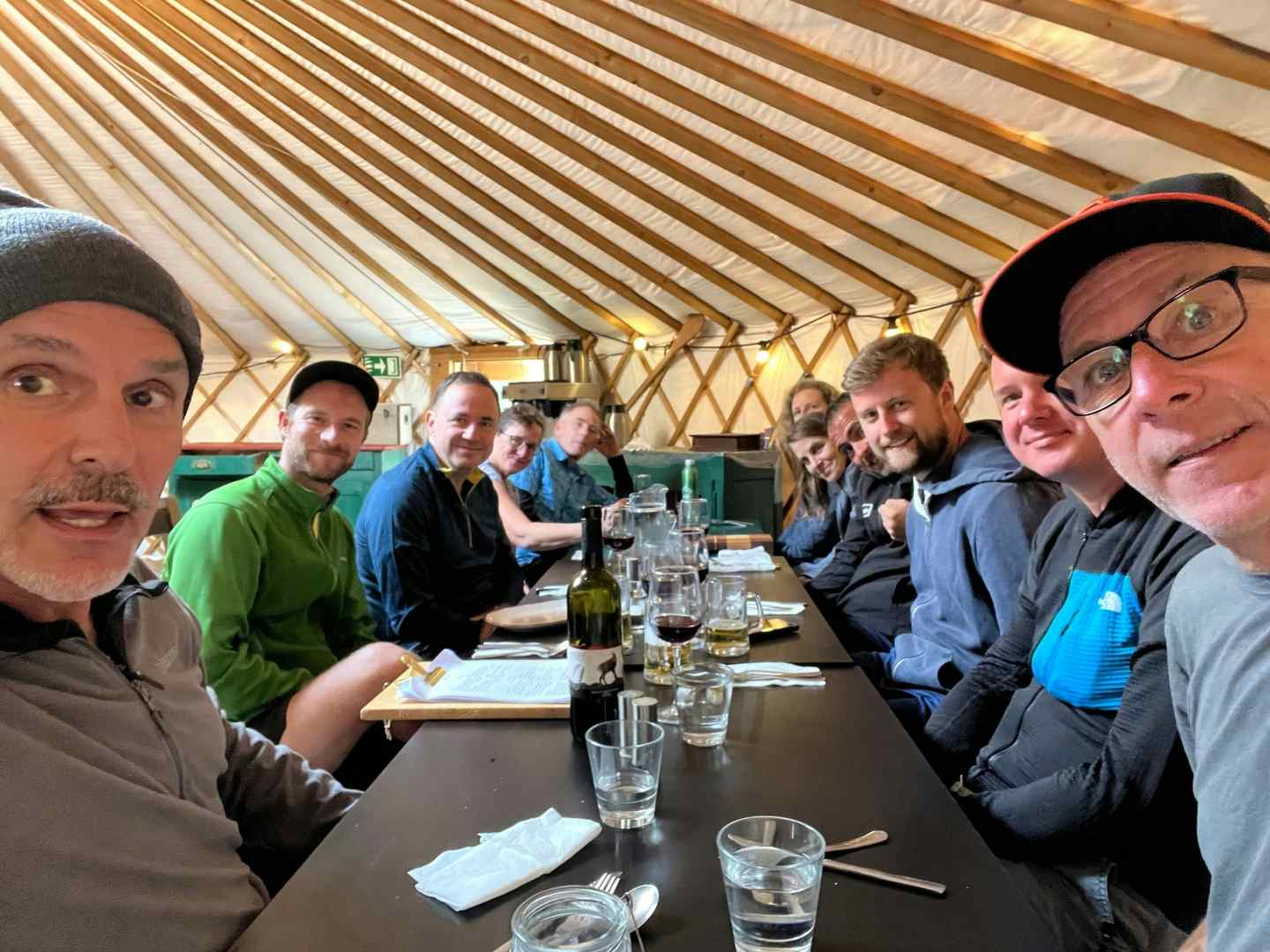
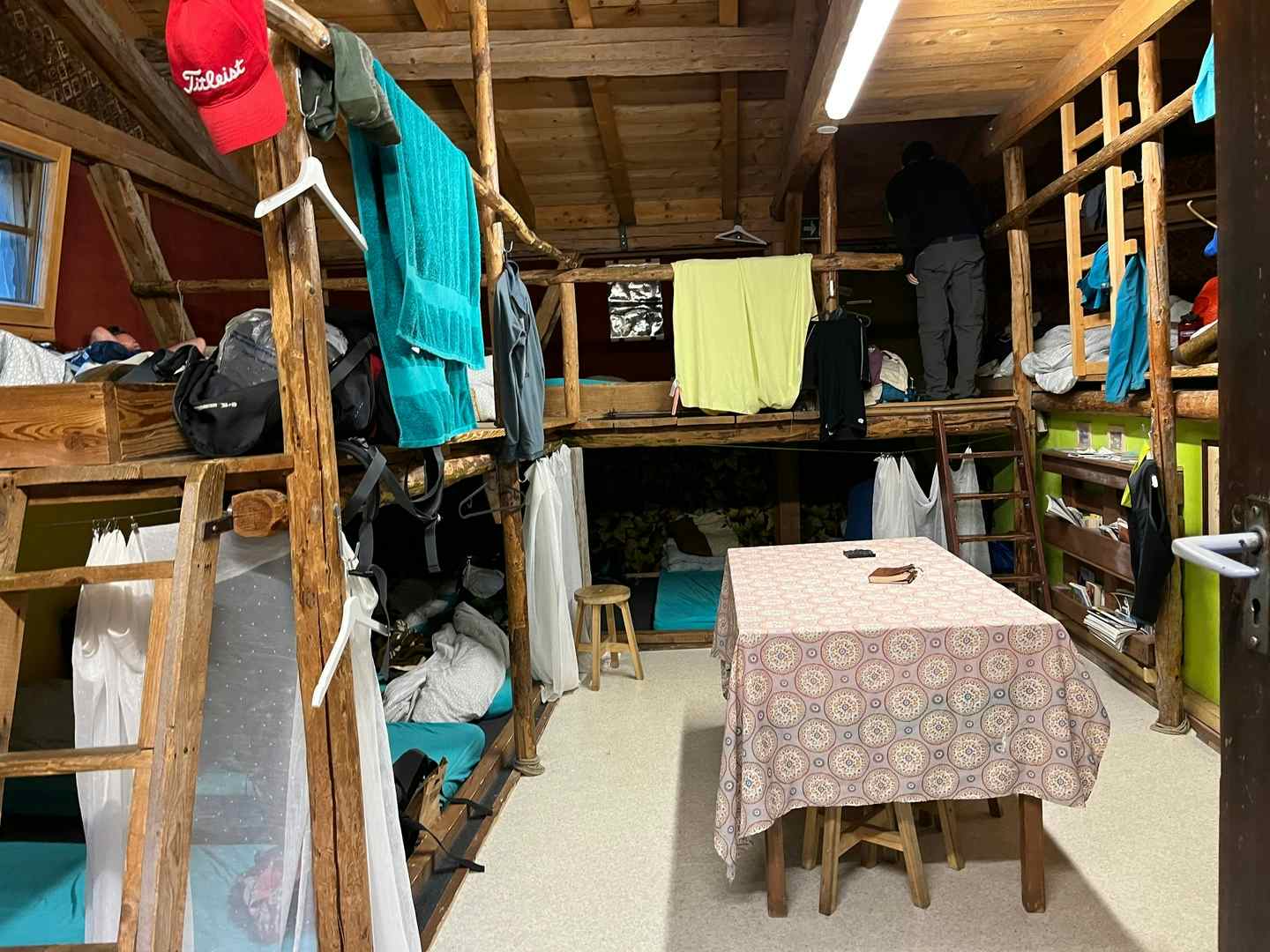
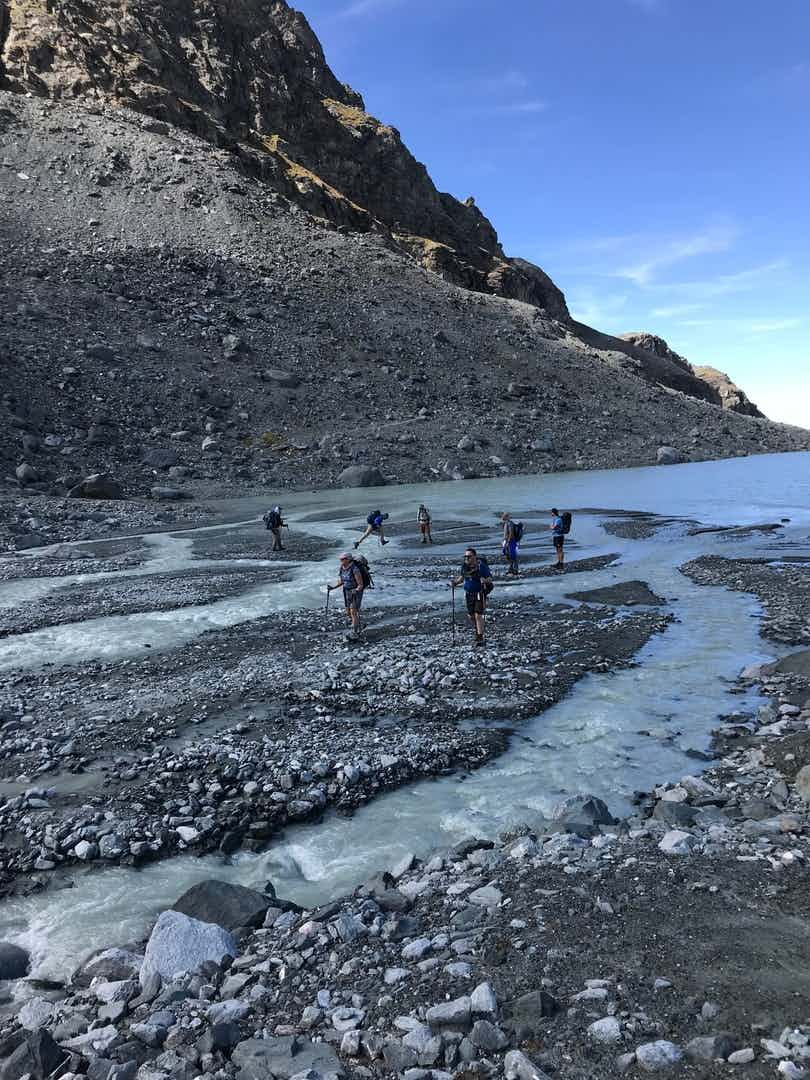
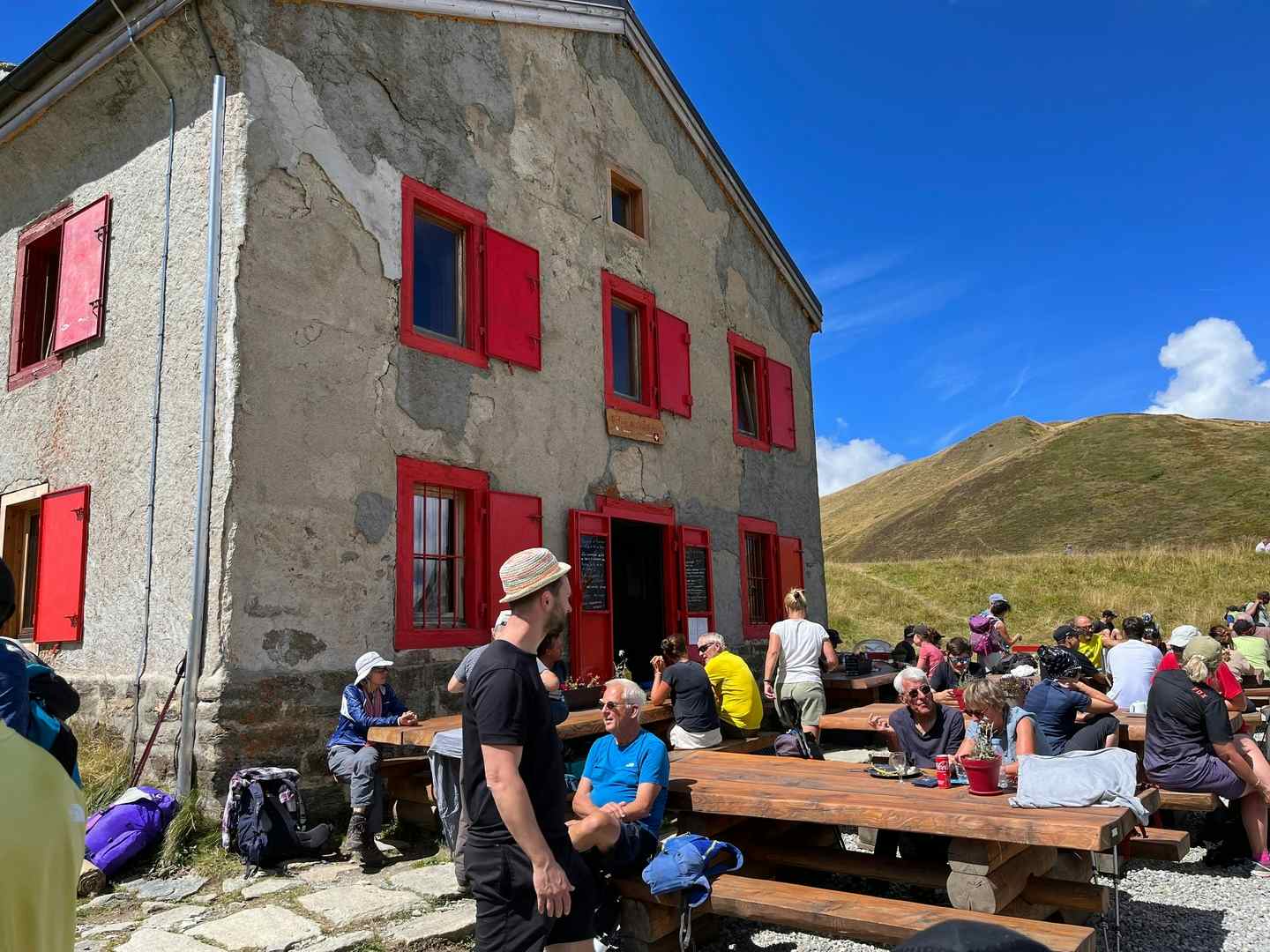
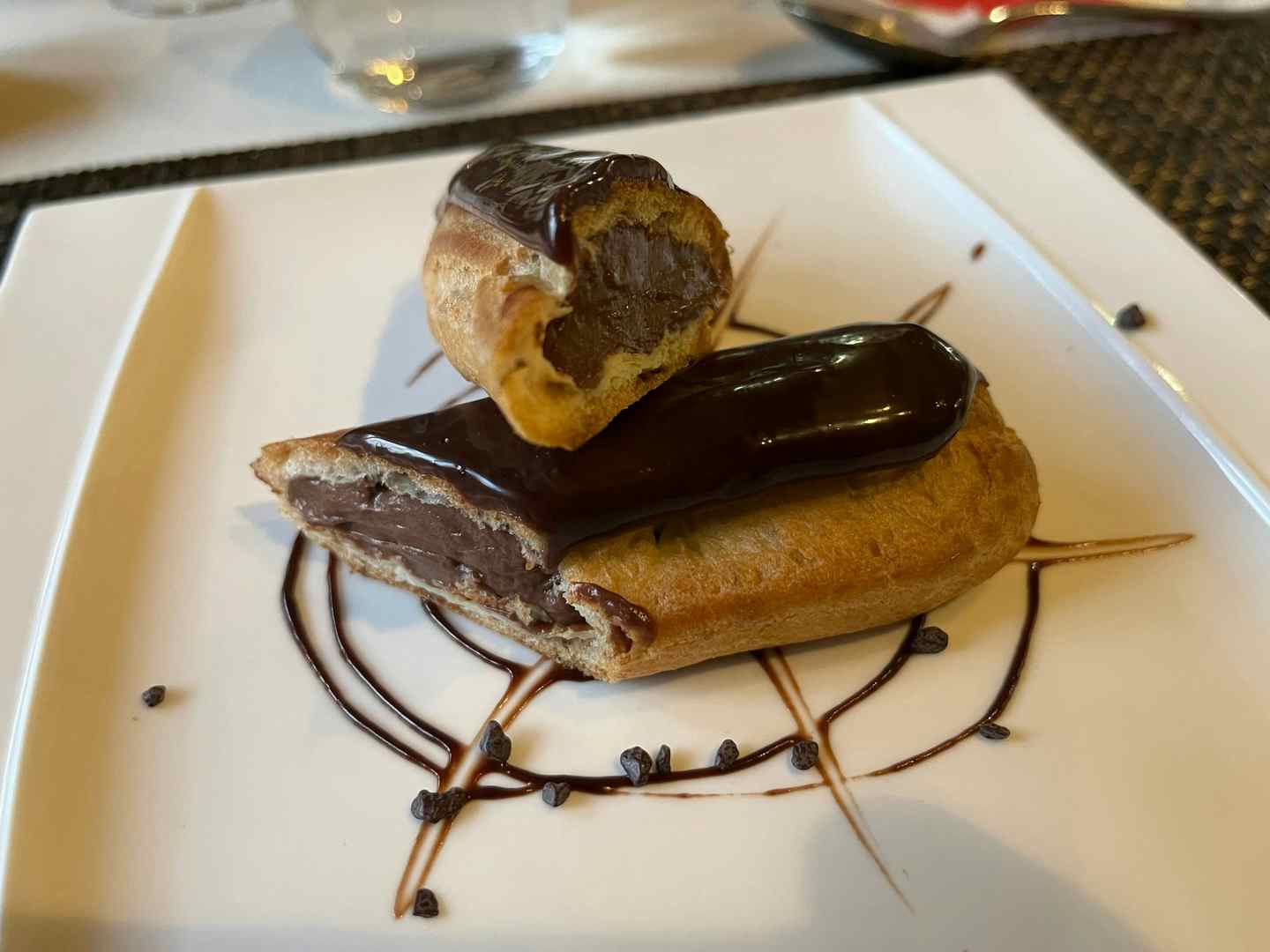

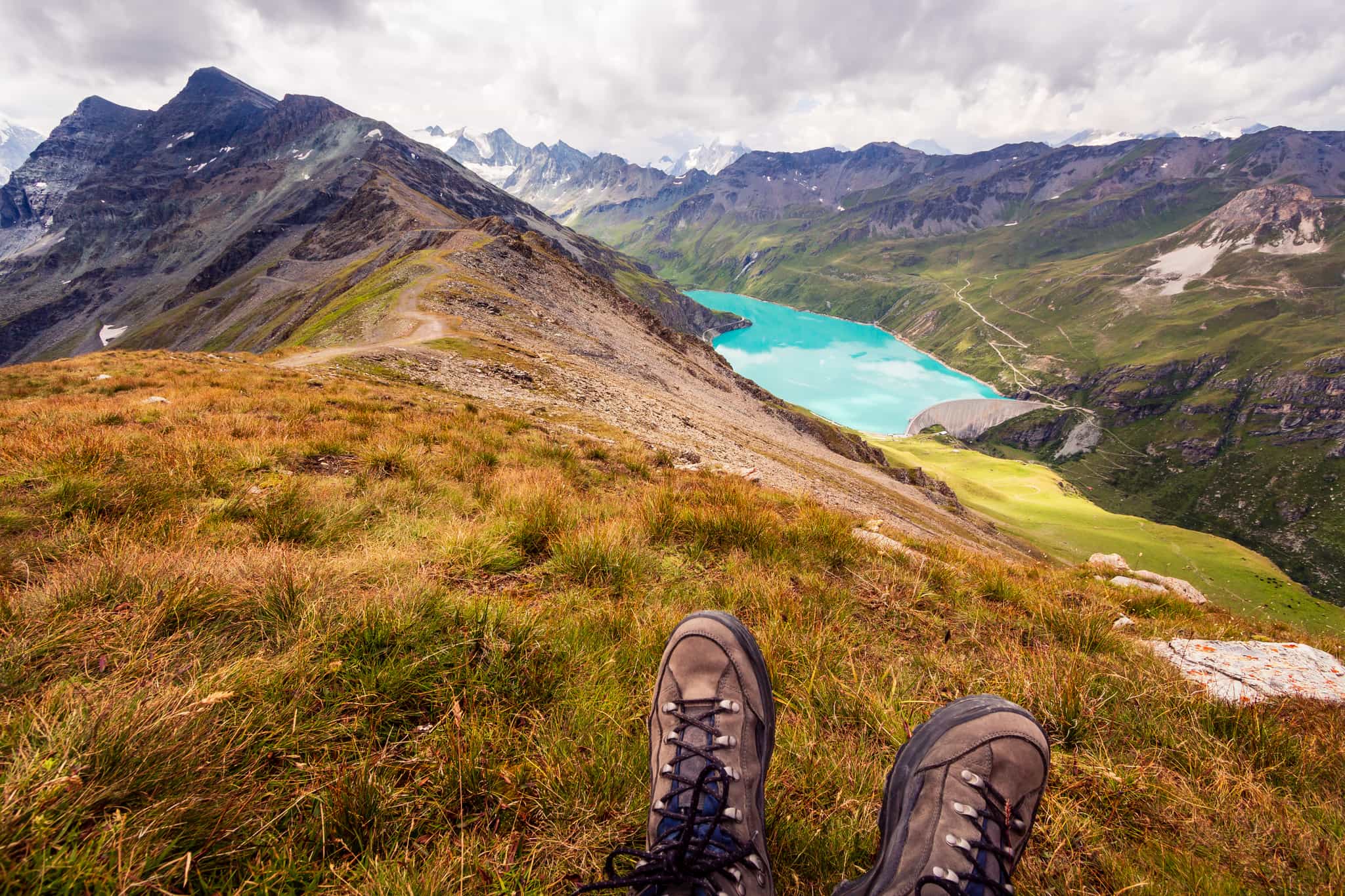
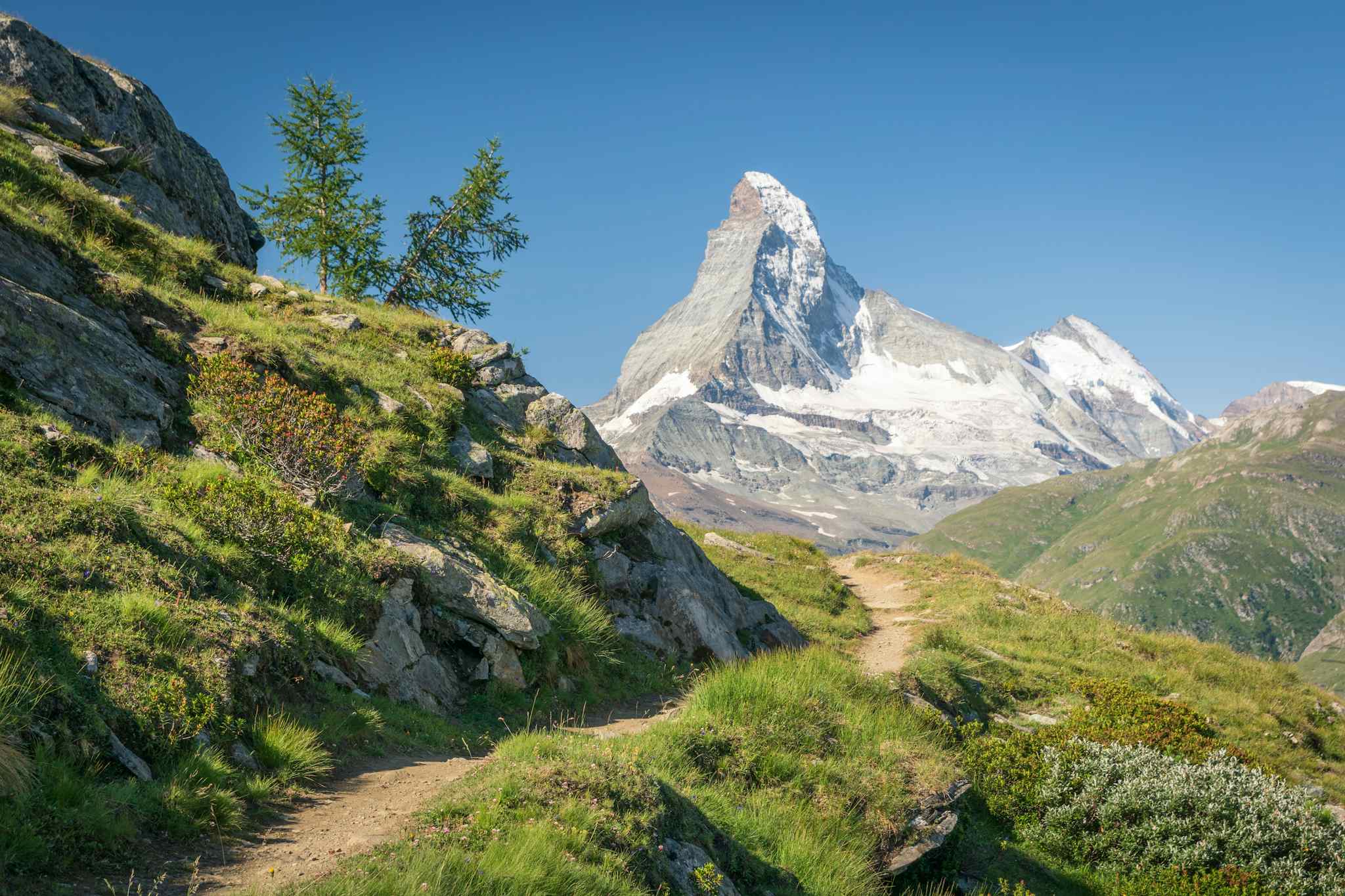
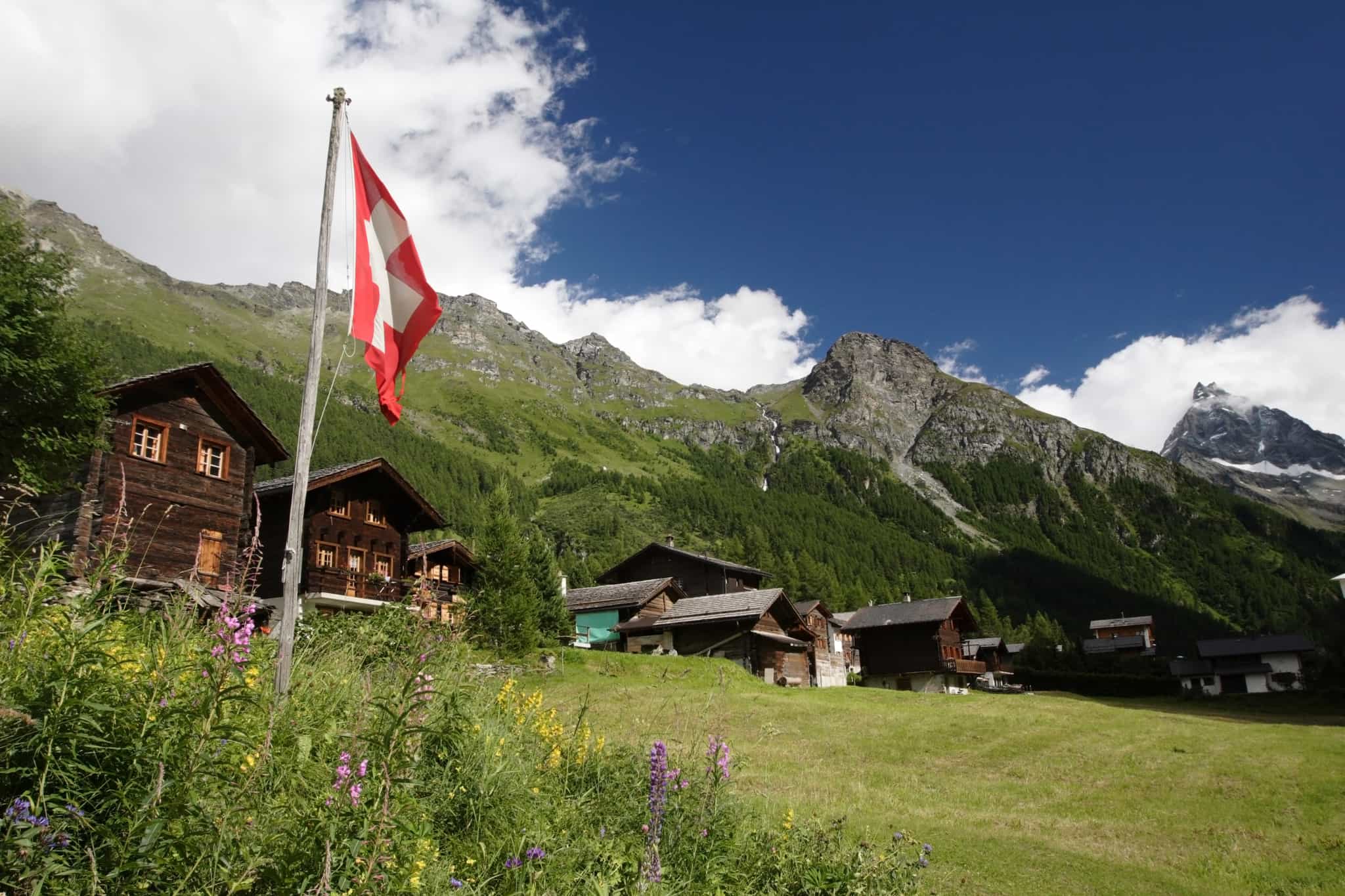
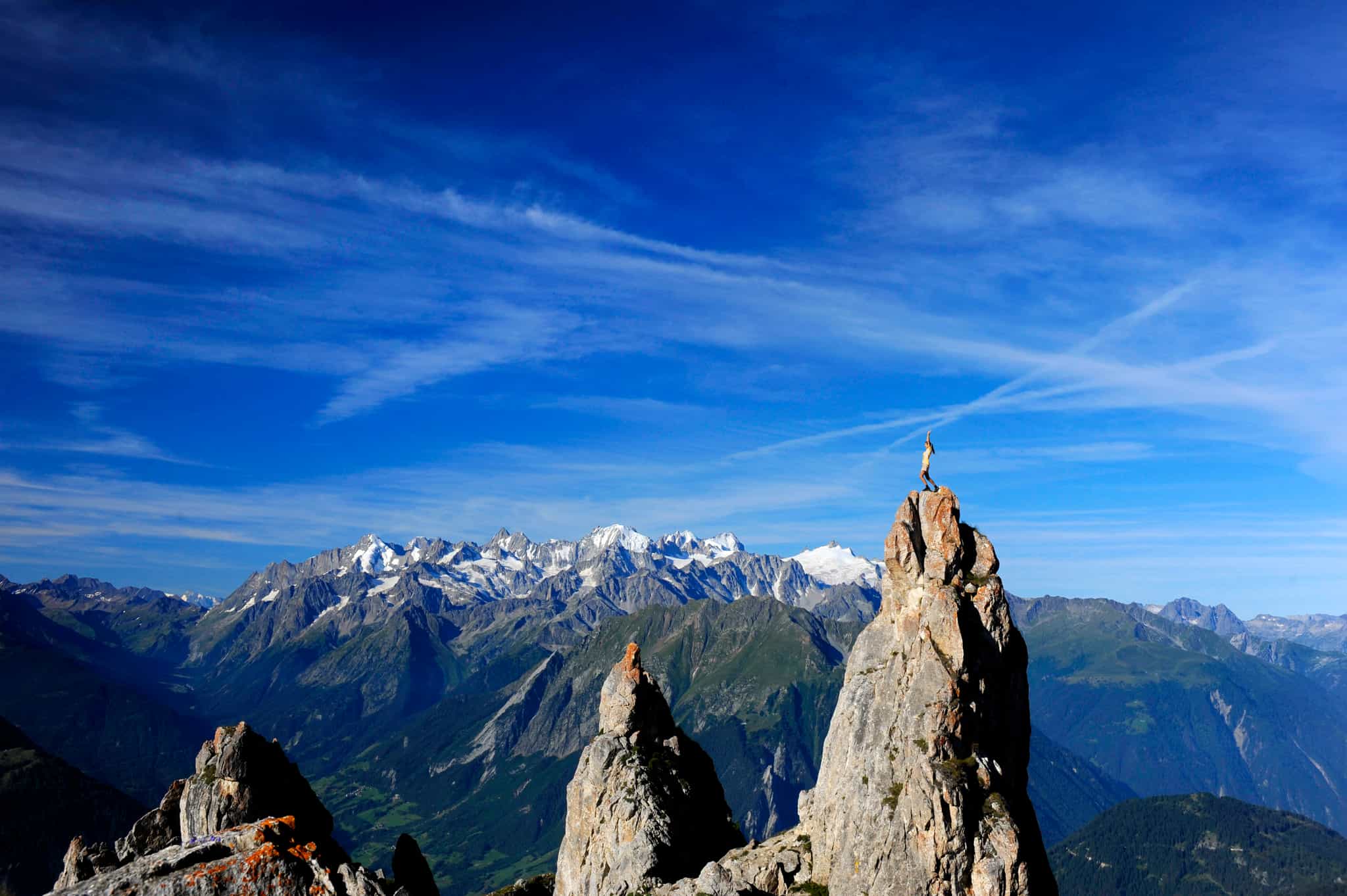
Take on one of Europe’s toughest and most prestigious long-distance trails
Experience the remote wonders of the Alps as you trek to epic viewpoints and traditional mountain villages
Get a picture-perfect view of the Matterhorn, one of the most iconic mountains on the continent
Short on time? Check out our alternative adventure, Trek the Haute Route in a Week
Key Information
Day 1
Trek to Trient
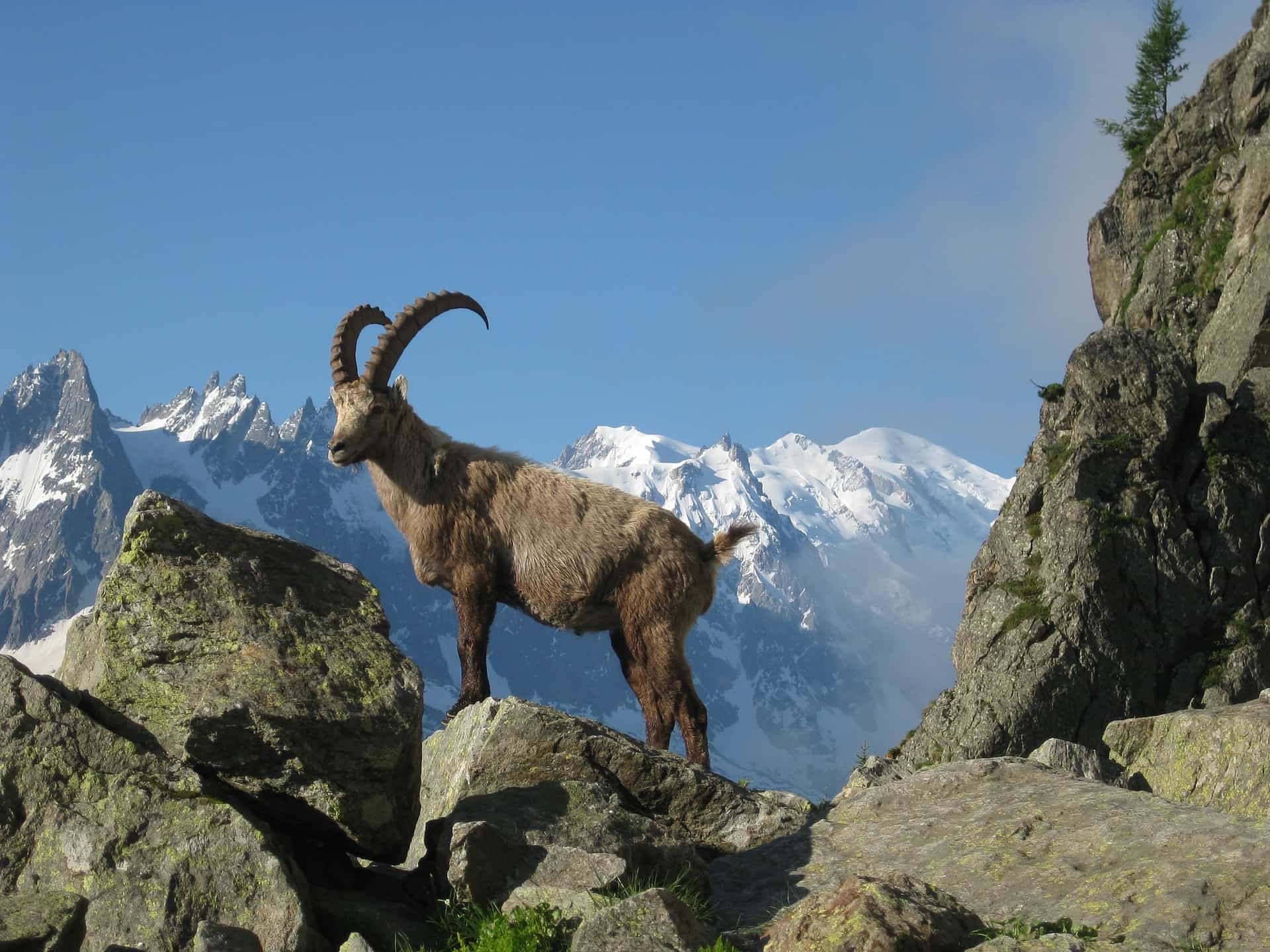
Hiking
Make your way to Chamonix Sud main bus terminal to meet your host at 08:30. From there you'll head to Argentière to start the hike and begin by tackling a gradual ascent to the summit of L'Aiguillette des Posettes above the Chamonix valley. Take in the epic views of the mighty Mont Blanc in the distance, then turn around and head towards the Col de Balme which straddles the French-Swiss border. From there you'll descend to the picturesque village of Trient, for a hearty meal and a well earned night's rest in an Alpine mountain refuge.
Day 2
The wild pass of Fenêtre d'Arpette
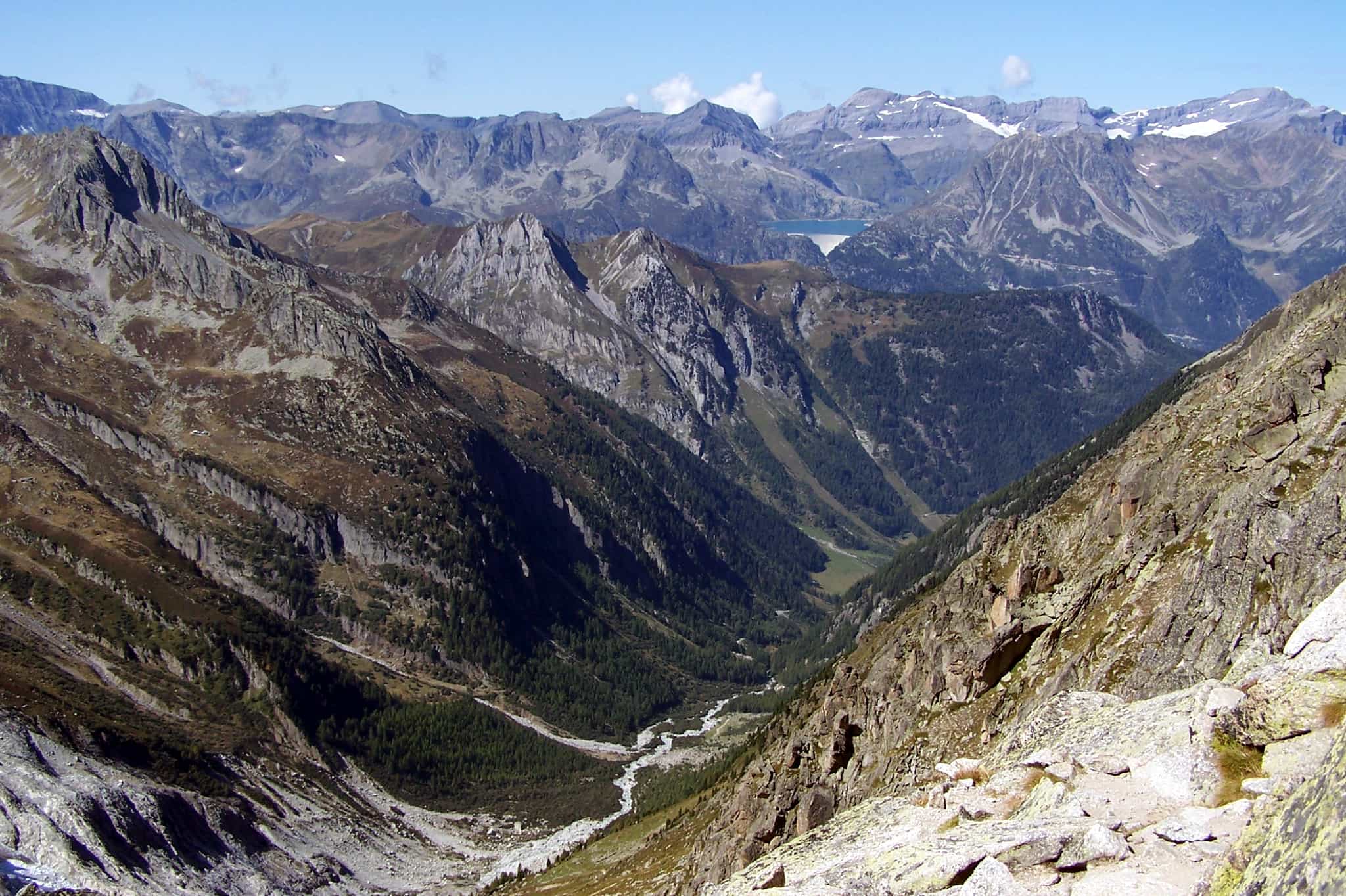
Hiking
Follow a rugged trail and scramble over the boulder-strewn terrain to reach the Fenêtre d'Arpette, a wild and narrow mountain pass known for its untouched beauty - eyes peeled for a glimpse of the Matterhorn. Cross through the steep Arpette Valley and spend the night in the small Swiss mountain resort of Champex-lac.
Day 3
Col de Prafleuri
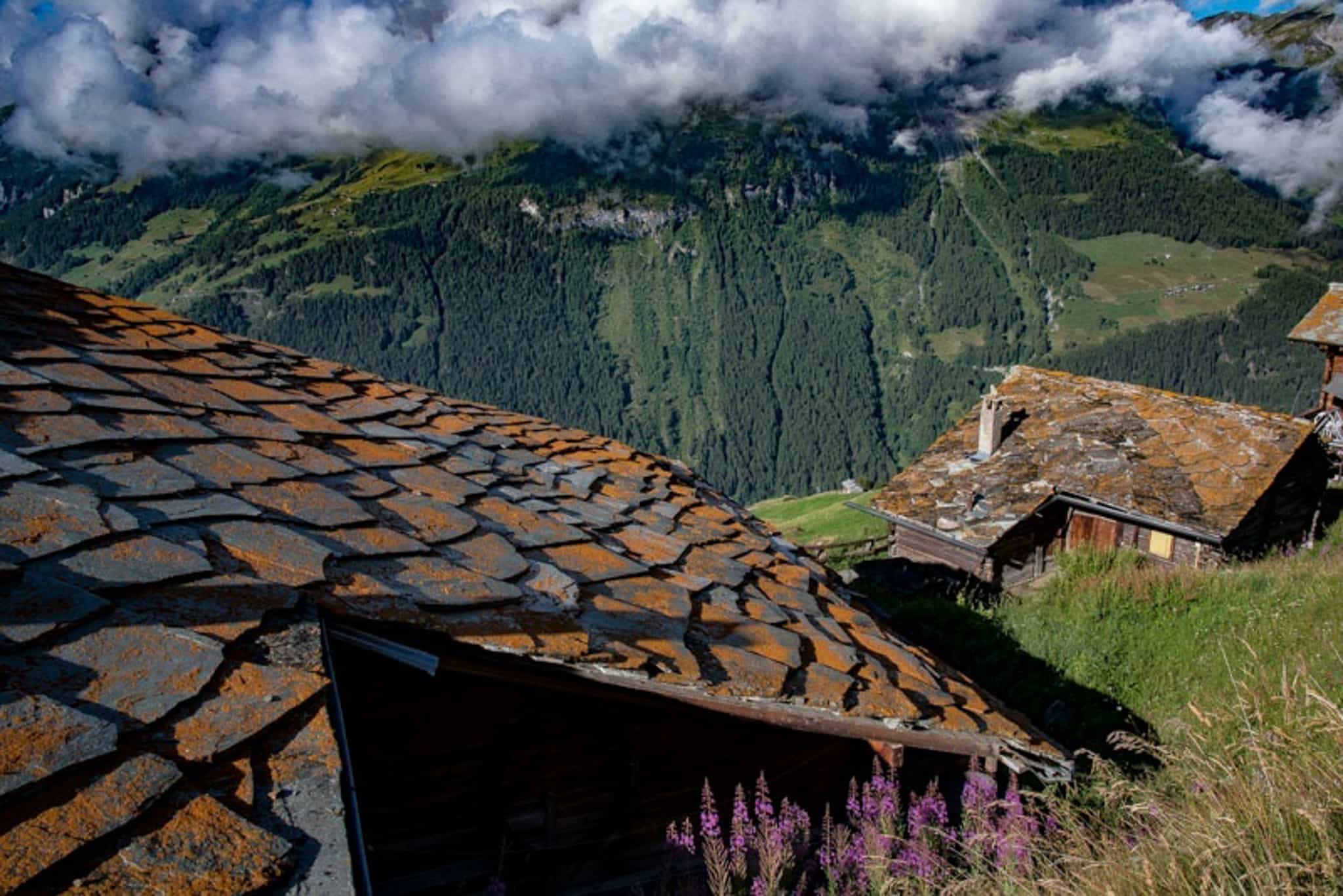
Hiking
Transfer to Verbier to catch the cable car to La Chaux, picking up a rugged trail through the remote peaks. After a couple of climbs separated by the crystal clear Petit Mont Fort Lake, reach Col de Louvie in time for lunch. Descend steeply and cross the otherworldly rocks of the 'Grand Desert', gradually ascending to Col de Prafleuri. Spot tonight's cosy hut (Cabane de Prafleuri) on the Letio d’Allèves Plateau below, reached via a short but steep technical descent.
Day 4
Pas des Chèvres

Hiking
Hike to Col des Roux for views over the impressive Grand Dixence Dam and descend to follow an easy trail along the lakeshore. Climb to the lower end of the Dix Glacier, where the final section demands careful navigation over the steep gradient and a ladder to traverse the final few meters. Follow a gentle trail from Pas des Chèvres down to Arolla. Time to rest up and recover at a nice mountain guesthouse.
Day 5
Lac Bleu
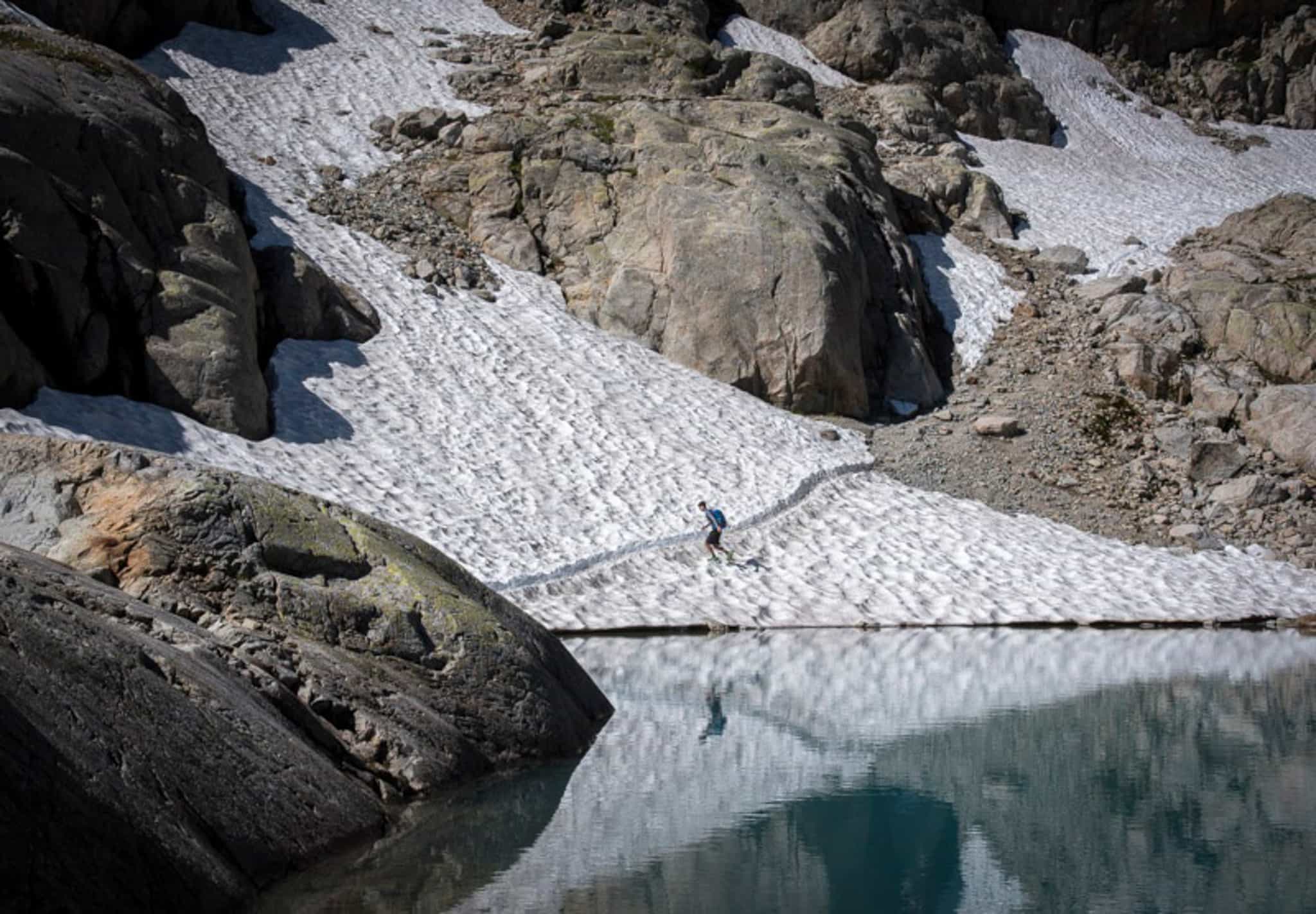
Hiking
An easier day to mark the halfway point. After a leisurely start and a relatively gentle forest stroll, there's a chance for the brave to take a dip in the pristine mountain waters of Lac Bleu. Continue through villages and farmland, along tracks of the famous black cows (Reines d’Hérens), passing through Les Haudéres to reach La Sage in the early afternoon.
Day 6
The big 4000s

Hiking
Set off on one of the toughest days so far as you hike toward the high point at Col de Torrent, with spectacular views over the 4000m peaks of the Alps. Descend to the Val de Moiry, passing the Lac de Moiry, where you'll stop for a well-deserved rest before continuing down the track to the Col de Sorebois. From there, take the gondola down to Zinal, where you’ll lay your head for the night.
Day 7
Col de Forcletta

Hiking
Meander through farms and meadows on a gentle trail overlooking neighbouring villages, before ascending the Forcletta Pass (the boundary between the French-speaking and the Swiss-German speaking parts of this area). Descend into the rural Meid-Valley on an isolated path which leads to a guesthouse in the village of Gruben.
Day 8
The Augstbord Pass
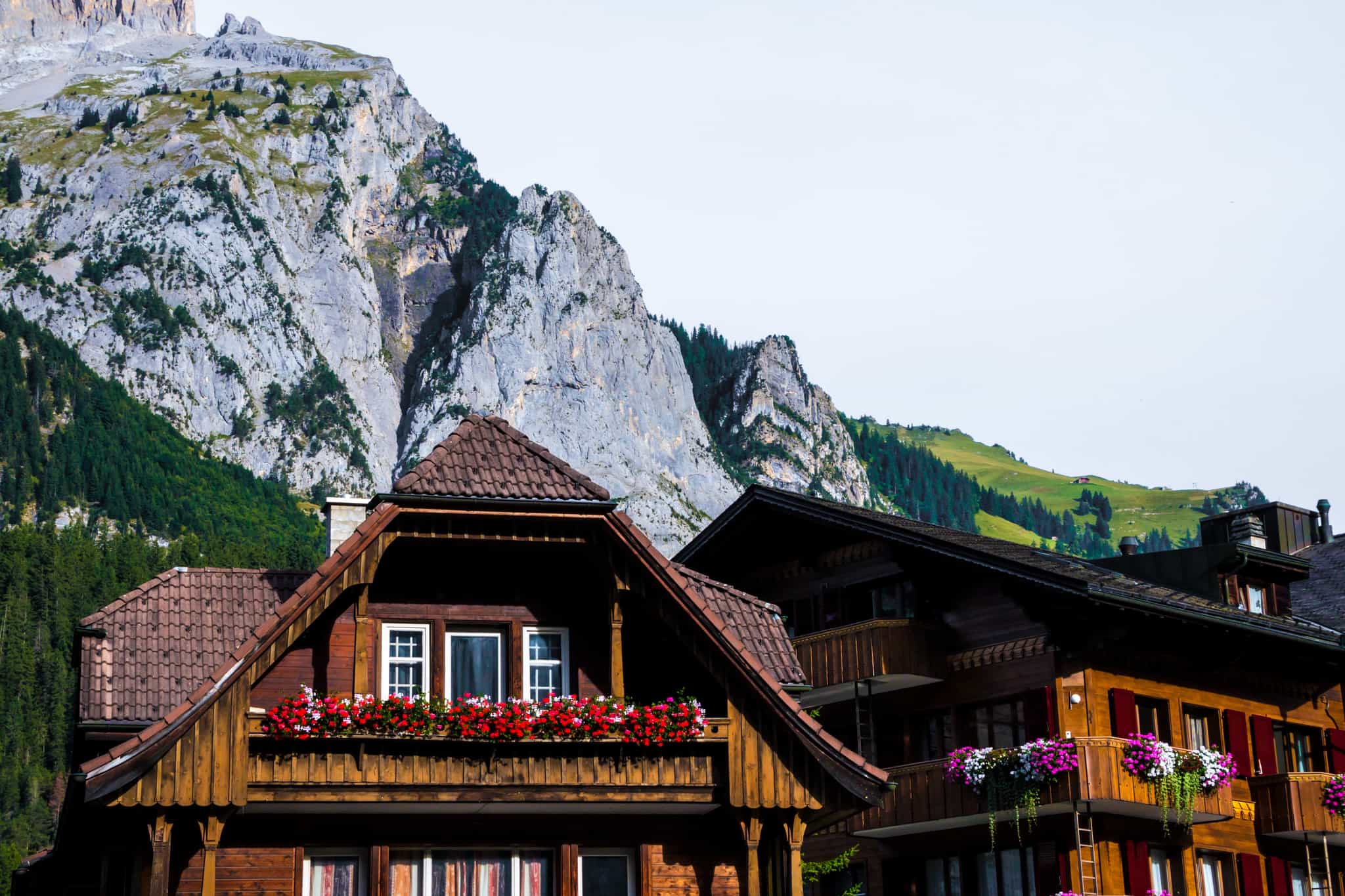
Hiking
Time for one of the most epic sections of the entire trip as you enter the Matterhorn Valley. Climb through sparse forest to the Augstbord Pass before descending into the Augstbordtal. Traverse a rugged trail built into a steep slope to the Jungtal. Ride the cable car from Jungu to reach the quintessentially Alpine village of St. Niklaus, where you'll check into a warm and cosy guesthouse.
Day 9
Hike the Europaweg
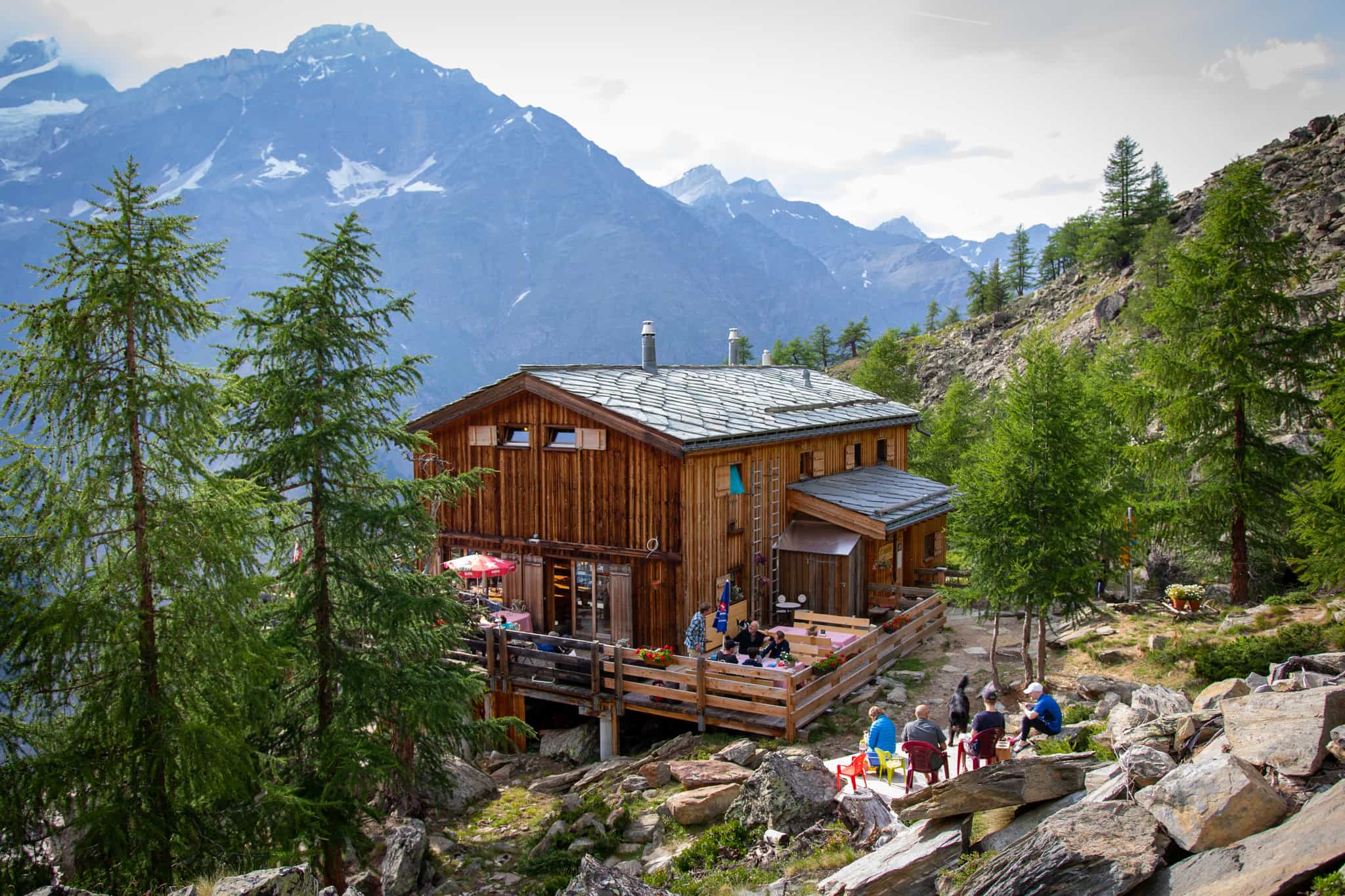
Hiking
Hike through traditional Swiss hamlets to Randa, then traverse high above the Matterhorn Valley on the switchbacks of the famous Europaweg trail. Continue on for a short distance to reach the Europahütte mountain refuge, known for its incredible views of the Matterhorn Valley and of the Weisshorn.
Day 10
Trek to Zermatt

Hiking
Cross the world's longest suspension bridge (the Charles Kuonen Bridge), which spans almost 500m. Spot famous peaks such as the Weisshorn, the Dom and the unmistakable Matterhorn as you continue along the Europaweg and trek right into your final destination of the trek, the lovely mountain village of Zermatt. Celebrate - you’ve earned it.
Day 1
Breakfast
Lunch
Dinner
Day 2
Breakfast
Lunch
Dinner
Day 3
Breakfast
Lunch
Dinner
Day 4 – Day 8
Breakfast
Lunch
Dinner
Day 9
Breakfast
Lunch
Dinner
Day 10
Breakfast
Lunch
Dinner
What is the food like?
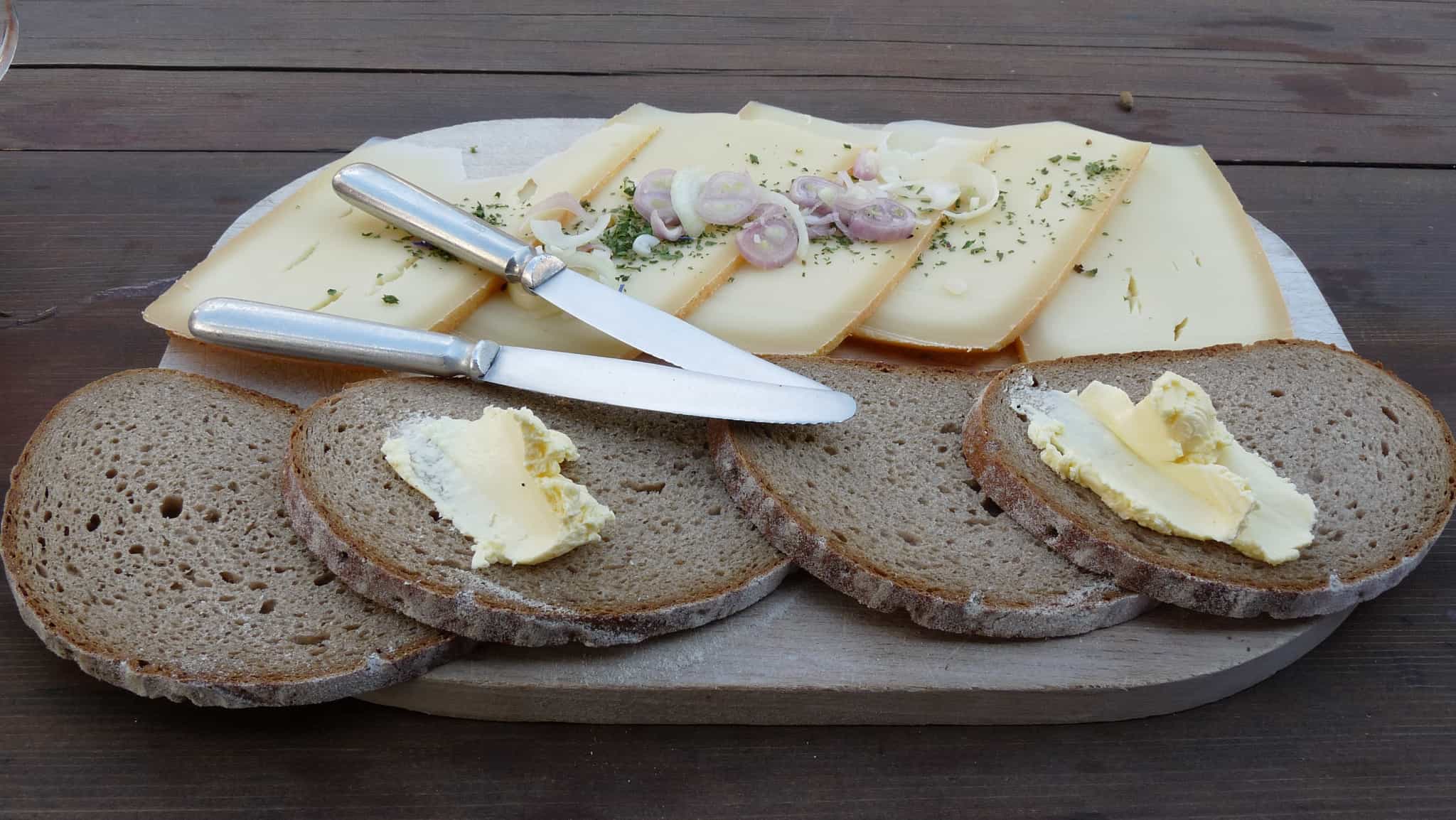
Breakfasts and dinners will be served at the refuges. Breakfasts always include coffee, bread, jam and butter. Depending on the refuge, they may also include orange juice, cereal, yoghurt, fruit, cheese and meats. Dinners are hearty and served in large portions – just what a hungry hiker needs! Typical meals include a soup starter, a main course of meat and veggies with a side of grains or pasta, and a dessert like vanilla pudding or creme brûlée. Picnic lunches will be provided each day, featuring a large main item like a sandwich or wrap, a salad, and a selection of fruit, muesli bars, chocolate, nuts, etc.
Vegetarian, vegan and most other dietary requirements (including gluten-free) can be catered for with advanced notice. Just let your host know when booking. Whilst dietary needs are sent to each refuge with the group reservations, please consider that the mountain refuges will have a limited range of choice to offer guests due to their remote locations. People with very specific dietary requirements typically choose to also bring some of their own snacks with them to ensure they have sufficient fuel for hiking up and down the beautiful mountain trails.
What is the accommodation like?

The Alps
For the most part, you'll stay in simple guesthouses and B&Bs in twin-share rooms, except for in a couple of locations (Europahütte, Cabane du Prafleuri and occasionally in Trient) where you'll stay in remote mountain huts in multi-share dormitories.
Each accommodation is unique but you can usually expect it to be simple, clean and comfortable. In the mountain huts, groups typically sleep in mixed dormitory rooms of up to 20 persons, usually in bunk or single beds. They feature hot showers, running water, pillows and blankets, and a bar serving cold drinks. Most refuges also have outlets for charging your electronics, and some even have WiFi. Some refuges are more modern in style, others have a more traditional heritage, most are busy throughout the hiking season; it's the refuge's location and its remoteness that largely decides what comforts and conveniences are available. It's best to keep your expectations simple and enjoy the time on the trail to unplug from everyday life.
Upgrades
Unfortunately, single room upgrades aren't available on this trip as some of the hotels are very small and have a limited number of rooms.
This trip has been rated as Tough
This trip is suitable for experienced hikers in good shape. You'll need to be able to hike 15–20km on mountain trails, with as much as 1000m+ of elevation gain and descent, each day. You will be carrying your own overnight pack between the refuges, so should be confident hiking with a 30-50L pack for multiple days. Doing some practice hikes before the trip with your pack and boots is strongly recommended to help you prepare for this adventure!
Summer in the Alps is generally warm and fair, but the weather can change very quickly in the high mountains, bringing cold rain and wind. Average temperatures range from 6 to 26 °C. It rains roughly half of the days each month, but storms generally pass through quickly. Even in the peak of summer you can have very mixed conditions, especially when climbing over the high mountain passes above 2000m. Heatwaves have also been a feature of recent European summers. Our kit list is intended to guide you on what to pack for this trip.
The Area
Logistics
Starts
Chamonix Sud Bus Terminal, France
08:30 on Day 1
Ends
Zermatt Train Station, Switzerland
17:00 on Day 10
Transfers
Make your way to Chamonix Sud Bus Terminal for 08:30 on Day 1. You should arrive in Chamonix any time the day before the start date and book a hotel of your choice.
The trip ends at around 17:00 on Day 10 in Zermatt, Switzerland. Air travellers can take the train to the airport directly from Zermatt. We recommend you stay the night in Zermatt to celebrate the end of your trek (a completely car free town) or you can head straight to the airport for a late flight: it takes 3.5 hours to reach Zurich-Kloten and 4 hours to reach Geneva.
Travel options
You can fly into Geneva Airport (GVA) which is approximately one hour from Chamonix. Alternatively, you can fly into Milan Airport (LIN) or Zurich Airport (ZRH) and travel on to Chamonix from there.
For those who wish to avoid flying, Chamonix is also accessible by train via the St. Gervais-les-Bains (Le Fayet) station at the base of the valley which connects to Chamonix Mont Blanc train station. For example, take the Eurostar from London to Paris and then connect to a number of direct lines or an overnight sleeper train from Paris to St. Gervais-les-Bains, then on to Chamonix Mont Blanc station.
You can also travel to Geneva by various train routes from other parts of Europe and travel on to Chamonix from there by bus. Geneva bus station is a 5 minute walk or short taxi ride from the central train station. There are various bus services from Geneva bus station to Chamonix, the quickest option taking 1 hour and 8 minutes. Your return leg at the end of the trip can begin at Zermatt train station for various onward train travel routes throughout Europe.
For those wanting to arrive a day early or extend their trip - your host is happy to help arrange pre or post trip accommodation on your behalf, with the price and style depending on availability and your budget. Your host will also be able to recommend an airport transfer company to get you to Chamonix.
Enjoy 12.5% Off Outdoor Gear
In need of a few more items? All bookings receive a 12.5% discount to use at Cotswold Outdoor, Snow + Rock and Runner's Need.
What's available to hire?
- Trekking poles (see Optional Extras for prices)
What do I need to bring?
You'll be carrying all you need for the ten day trip on your back, so don't over pack but also don't skip the essentials. Hiking in the Alps even in the peak of summer you can have very mixed conditions, both hot and cold, especially when climbing over the high mountain passes.
KIT
- 30-50L backpack with waist belt (plus a rain cover)
- A Pack Liner or Dry Bag is also good protection in case of rain
- Sleeping bag liner (cotton or silk). This is very important as it's a mandatory requirement at the mountain refuges. Pillows and blankets are provided by the refuges.
- Sunglasses and Sunscreen (SPF 50+ recommended due to altitude)
- Hydration/Electrolyte tablets
- Preferred snacks for the trail
- Towel
- 2L water bottle(s)
- Toiletries and personal first aid items
- Swim suit
- Earplugs and Eye Mask (recommended)
- Cash (CHF) for drinks, snacks along the trail, tips etc.
- Plug adaptor and/or battery pack to charge electrical devices (note Switzerland uses a different standard to the rest of Europe)
- Headlamp
CLOTHES
- Waterproof Jacket (with hood) and Trousers
- Primaloft or Down Jacket
- Fleece or merino pullover or sweater
- Synthetic or merino wool base layers
- Warm hat and gloves (really important in mixed weather conditions)
- Sunhat or cap
- Synthetic shirts and trousers (zip-off preferable) for hiking
- Comfortable shirt and trousers for the refuges
- 2+ pairs of hiking socks, wool or synthetic
- Sturdy hiking boots or shoes (worn in)
- Comfortable light shoes for around the refuge
Trekking Poles
Payable In Resort
Trekking Poles
…
Our Purpose
To protect our world's wild places, one adventure at a time.
Positive impact adventure travel

